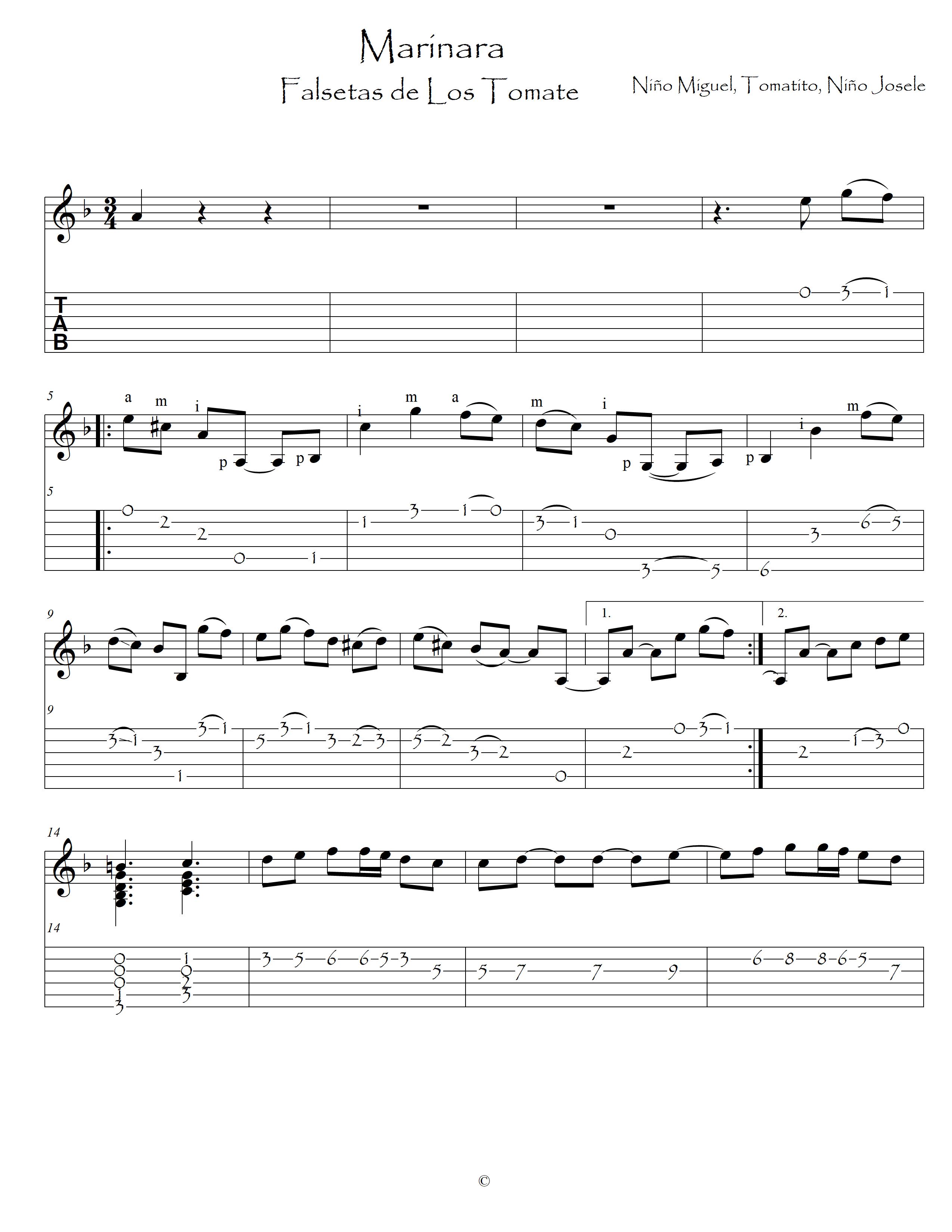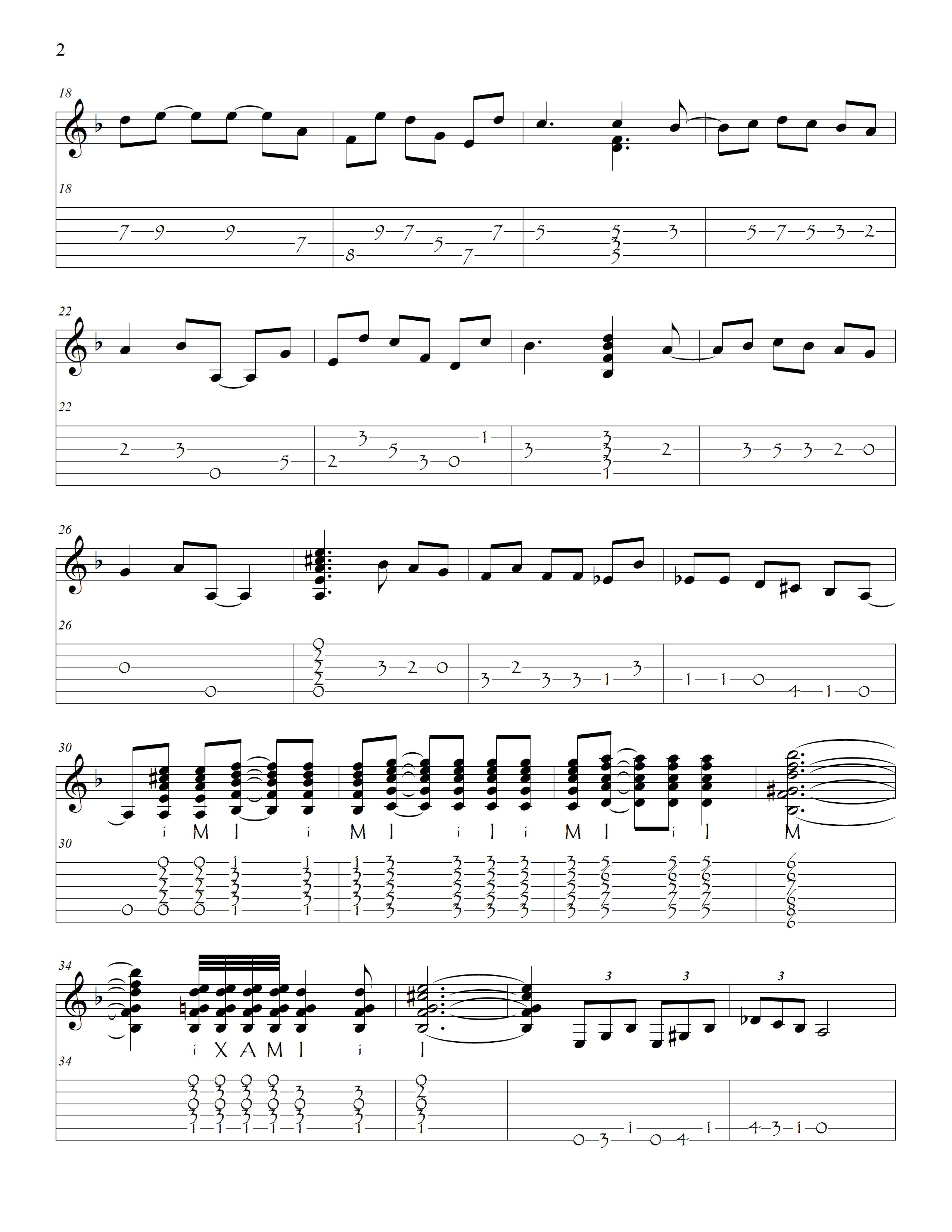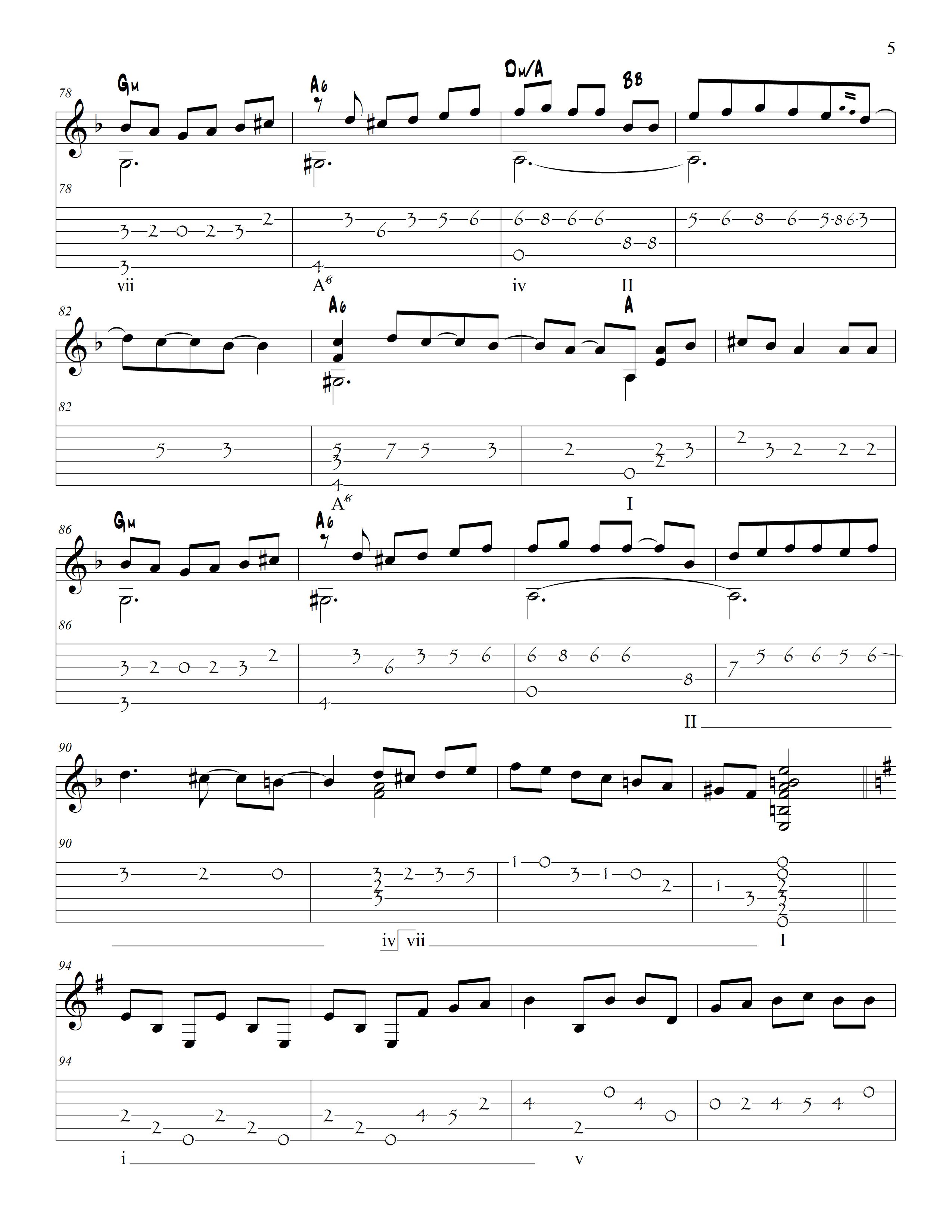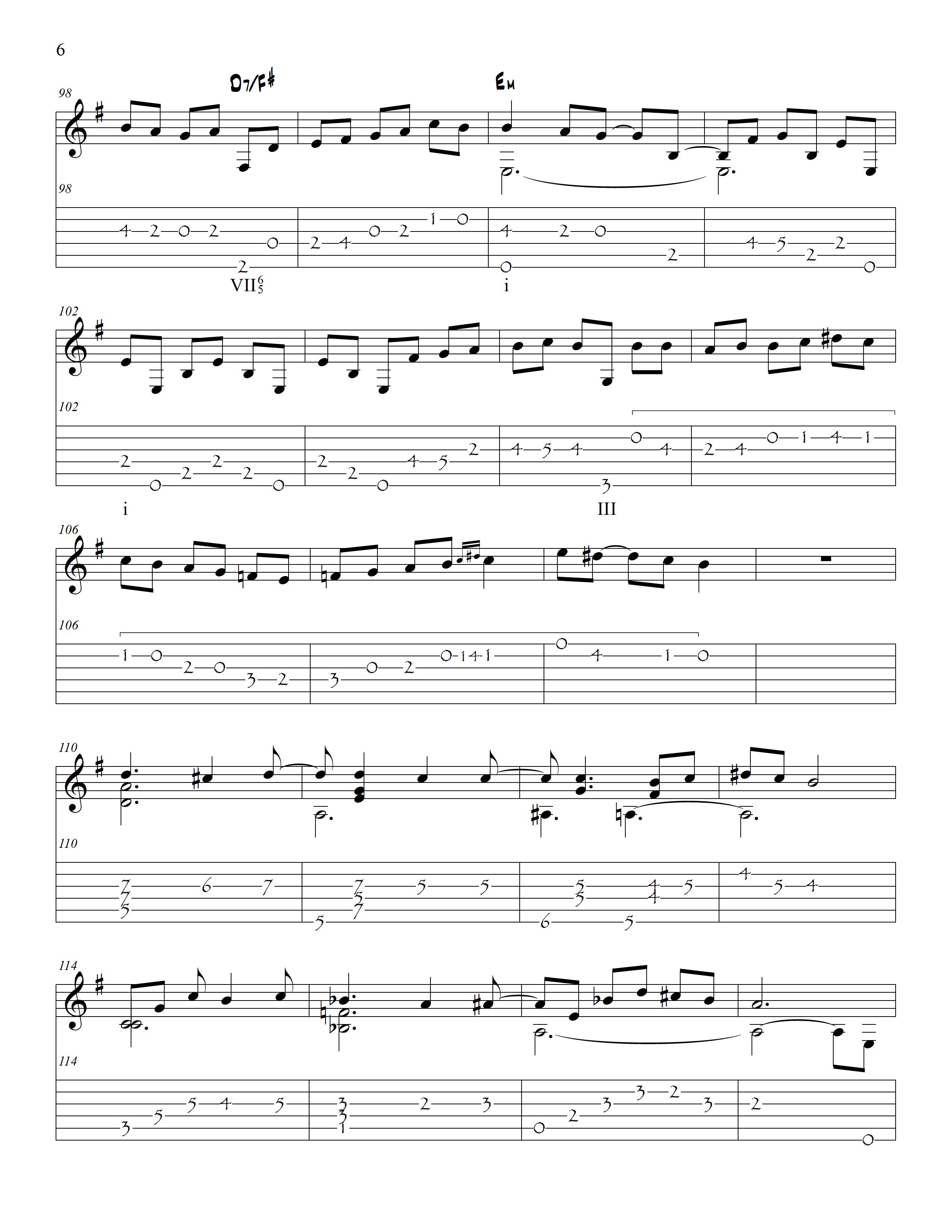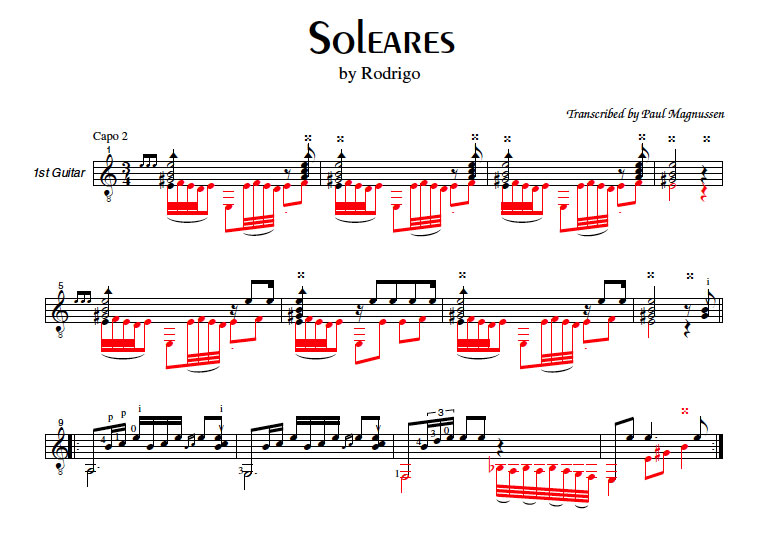|
xirdneH_imiJ -> RE: Transcription and Creativity - Best/easiest Programs (May 14 2024 17:23:44)
|
I'm the guy behind TabsFlamenco and I've had to face these (and many more) questions over the years. I exclusively use Guitar Pro for transcriptions and it really has nearly everything you need except one or two flamenco specific tools that would be nice to have but ultimately nobody else would ever use them.
You obviously have the option to mark fingerings on both hands using their tool, but both as a transcriber and a consumer I find it a tremendous waste of time, because 1. it places the text in a way that it's difficult to read, 2. it takes a lot more time to input. Therefore I'm a big believer in text input.
Another thing is that I would assume (and I know often that is not the case) is that somebody purchasing a transcription of some complexity at least has a basic knowledge of techniques in flamenco, or at least some common sense. In the 5th measure you mark the a-m-i-p, but realistically what else could it be? If I were to mark all these instances, creating every transcription would take twice-thrice the amount of time, it would also make the tab much harder to read because of all the clutter. My solution is to mark everything where there could be a question mark, typically rasgueados. Even then, I will only mark them once and then you can assume that all similar phrases will be played with the same technique. If not, I'll mark them again.
I also use the up and down arrows fairly often, like a P↓mP rasgueado or an amii↓, etc. I mark regular golpes with an x (even though the newer GP versions already have a golpe in them), the ones above the low bass I mark with xx. The muted strums you mention I either mark with xxxxx over the strings, or I put the chord in brackets, depending if it's a complete mute, or you can make out the notes.
I hope this helps!
|
|
|
|
